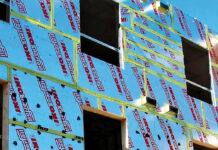by Dave Wilkes
BILD
Since 2004, development fees have skyrocketed across the GTA, increasing between 236 per cent and 878 per cent.
I have previously outlined the important role that infrastructure plays in building a liveable GTA and the support it provides to the development of new homes.
Infrastructure is, literally, the foundation of every city and it benefits all residents both existing and new.
Infrastructure comes at a cost and is paid for from a variety of sources, including development charges levied on new homes. Development charges are taxes imposed on new projects by local and regional governments, as well as GO Transit and educational boards.

Since 2004, these fees have skyrocketed across the GTA. They have increased between 236 per cent and 878 per cent — or 10 to 40 times the rate of inflation.
For example, in Oakville, development charges will now add $74,000 to the price of a new single-family home. When municipal fees and regional costs are added, this increases to over $100,000. In Markham, this figure is approximately $103,000; in the city of Toronto, it is $98,000 for a home and $69,000 for an average highrise apartment (including the municipal land transfer tax). In the city of Toronto, costs will reach $118,000 by 2020 for an average single-family home and $76,000 for an average highrise apartment.
Our industry accepts that new development should pay its fair share. However, we are concerned that costs are being included in development charges that do not exclusively relate to development. Some municipalities are increasingly relying on development charges — plus other municipal charges — on new homes as a pretext to avoid raising residential tax rates. The numbers back this up, as residential property taxes across the region have increased on average by 40 per cent, or 5 to 20 times less than increases in development charges.
Housing affordability and supply is a significant challenge in the GTA. Not only does it squeeze young people and families looking to own their own home out of the market, but it also threatens the economic competitiveness of the region.
The Toronto Region Board of Trade recently outlined that housing supply and affordability is causing young professionals to consider moving out of the region, limiting employers’ ability to attract and retain the talent they need to be competitive.
In the lead-up to municipal election, there will be a lot of discussion of the needs of a growing GTA. As we consider how to address the future challenges, we need to have a broader discussion on who pays for what — especially where the benefit extends to residents.
Keeping government fees and taxes on new homes fair and equitable is one of keys to the complex issue of housing affordability.
 |
David Wilkes is president and CEO of the Building Industry and Land Development Association (BILD).
He can be found on Twitter, Facebook, and BILD’s official blog. |











